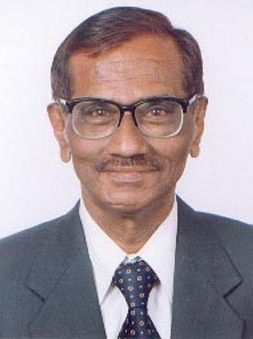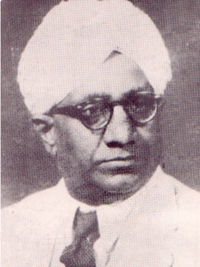Reality, according to Jainism, is uncreated and eternal; and it is characterized by origination or appearance (utpada), destruction or disappearance (vyaya) and permanence (dhrauvya). Every object to reality is found possessed of infinite characters both with respect to what it is and what it is not. It has its mode (paryaya) and qualities (guna), through which persists the essential substratum through all the times. The basic substance with its qualities is something that is permanent, while the modes or accidental characters appear and disappear. Thus both change and permanence are facts of experience. The soul or spirit, for instance, is eternal with its inseparable character of consciousness; but, at the same time, it is subjected to accidental characters like pleasure and pain and super imposed modes such as body etc., both of which are changing constantly. Gold, for instance, with its colour and density is something that is permanent though subjected to different shapes at different times.
The substances are real, characterized by existence, and they are six in number. They can be broadly divided into living (jiva) and non-living (ajiva). The jiva means soul or spirit. It is essentially in unit of consciousness and there in an infinity of them. The soul can be classified into those that are in bondage (baddha) and those that are free (mukta) Those in bondage may possess only one sense organ or more than one. The former are associated with earth, water, fire, wind and plants, and the latter differ among themselves according to the number of senses.
The class of non-living substances is made up of matter (pudgala), principles of motion and rest (dharma and adharma), space (akasa) and time (kala). Though all these are characterized by existence, the constitution of time is slightly different: it has no extension in space, but is made up of partite units. The matter is the non-living stuff possessed of senses-qualities with varied functions and forms: the principles of motion and rest facilities, all these substances are accommodated in space; and it is the principleof time that marks continuity or change. These substances are eternally existing, uncreated and with no beginning in time. As substances they are eternal and unchanging, but their modifications are passing through a flux of changes. Their mutual cooperation and interaction explain all that we imply by the term ‘creation’; and Jainism therefore, admits no intelligent creator who can be credited with the making of this universe.
Consciousness (cetana) is the very essence of the soul, which is potentially endowed with infinite vision, infinite knowledge, infinite power and infinite bliss. But all these are suppressed in the case of mundane souls, because they are bound by subtle matter, namely karman, a sort of energy as it were which obscures their power. The destiny of the soul in transmigration is governed by karman. Every though, word or act of the individual, fashion a certain state of the soul as a result of which there is the influx of karman of various types or subtypes. The karmic matter shapes itself into a subtle body and clings to the soul and binds it in the circuit of birth as gods, men denizens of hell and sub-human beings. By cultivating pure thoughts and acts, the influx of karman, both good and bad, has to be stopped; and the stock of binding karman is to be consumed by religious austerities. When the karmas are completely destroyed, the soul becomes liberated with all its potential qualities fully developed. This liberated and perfect soul is an embodiment of infinite knowledge and bliss. The doctrine of karma is an original and integral part of Jainism; and it goes a long way to prove how Jainism is older than Buddhism. The Jain karma doctrine is an elaborate system most meticulously worked out showing how different karmic energies become operative or inoperative in the spiritual career of the mundane soul from its lowest state to final liberation. It is made to explain all the vicissitudes in life. Just as the interaction eternal substances postulated in Jainism admit no creator, so also the inviolable law of karman makes man the master of his destiny and dispenses with the favourite theistic idea that some divinity bestows on man favours and frowns.
The soul or spirit being essentially constituted of consciousness, the act of knowing it is just the manifestation by the soul of its intrinsic nature. This consciousness is something like sun’s light, able to manifest itself as well as to enlighten other objects, unless obstructed by the karman. Every soul thus is potentially omniscient. Omniscience is fully manifested in the case of liberated soul, while the mundane souls have different degrees of limited knowledge, due to the hindrance of karmas. The bodies, the sense organs, mind (manas) are all material and the results of karman; and they counteract omniscience. The types of knowledge manifested in the soul mark in a way the stages of its spiritual development.
There are five types of knowledge:
- Matijnana, which refers to sense experience and covers perception through the activities of sense organs (including mind) and the inferential knowledge based on these;
- Srutajana, which is the knowledge revealed by scriptures;
- Avadhijnana, which is the clairvoyant perception that enables one to perceive material objects and events of distant time and place, and which has varyingScope and degrees according to the qualifications of the individual;
- Manahparyaya jnana, telepathic knowledge, whereby one knows the thoughts in the minds of others and which is the result of meritorious acts etc.; and
- Kevalajnana, the unique or the perfect knowledge, which is revealed in the soul when the obstructive karmas, are destroyed and wherein the process of knowing is without spatial and temporal limitations.
Understanding or the acquisition of knowledge (adhigama) is attained by means of pramana (instruments of knowledge) and naya (point of view). The five type of knowledge, noted above, constitute the Pramana. In the last three types the process, of knowing is directly by the soul or spirit without the aid of sense-faculties; and they are called, therefore, immediate or direct (pratyaksa) instruments. The last two and even a variety of the third (avadhi) are necessarily infallible. The first two are indirect or mediate (paroksa); herein there is no direct perception by the soul, but it is through the aid of intervening medium of sense-organs. These can be authentic as well as liable to error.
It is seen above that according to Jain philosophy, the object of knowledge is a huge complexity constituted of substances, qualities and modifications, extended over three times and infinite space, and simultaneously subjected to origination, destruction, and permanence. Such an object can be fully comprehended only in omniscience, which is not manifested in the case of worldly beings who perceive through their organs of senses. But the senses are the indirect means of knowledge, and whatever they apprehend is partial like the presumption of an elephant by those seven blind persons; each one touches only a part of the animal and concludes that the animal is like a log of wood, like a fan, like wall etc. The ordinary human beings, therefore, cannot rise above the limitations of his senses; so his apprehension of reality is partial, and it is valid only from a particular point of view: this leads to the Nayavada of the Jain. In describing different ornaments one’s attention id directed towards the modes or modification of gold, that is the modal point of view (paryayarthika- naya): and when one describes gold with regards to its substance and inherent qualities that is the substantial point of view (dravyarthika-naya). On par with these but in spiritual discussions we have the common sense or practical point of view (vyavahara-naya) and the realistic point of view (niscaya-naya)Going into further details, there are seven nayas; some refer to the substance and others to modifications; and some arise out of the nature of the subject and some out of the verbal statement.
A thing, or the object of knowledge, is of infinite characters (anekantatmaka) which require to be analyzed and apprehended individually; that are the function of the nayas. Individual nayas reveal only a part of the totality, and it should not be mistaken for the whole. Because of this infinite fold constitution of a thing, there can be infinite points of view; and the same are classified as seven, two, etc. This Nayavada is a unique instrument of analysis. The Jain philosopher has taken the fullest advantage of it not only in building has system by a judicious search and balance of various viewpoints, but also in understanding sympathetically the views of others from whom he differs and in appreciating why there is difference between to two. This analytical approach to reality has saved him from extremism, dogmatism and fanaticism, and has further bred in him remarkable intellectual toleration, a rare virtue indeed.
It is not enough if various problems about reality are merely understood from different points of view. What one knows one must be able to state truly and accurately. This need is met with by the famous theory of Syadvada in Jainism. The object of knowledge is a huge complexity covering infinite modes and related to three times; human mind is of limited understanding; and human speech has its imperfections in expressing the whole range of experience. Under these circumstances, all our statements are conditionally or relatively true. So Jain logic insists on qualifying every statement with the term ‘syat’, i.e., ‘somehow’ or ‘in a way’ to emphasize its conditional or relative character. Such a qualification is to be always understood whether a tem like ‘syat’ is added or not. A judgment, ordinarily speaking can assume two forms; affirmative and negative, and has a reference to the substance (dravya), place (ksetra) time (kala) and shape or concept (bhava) of an object. An affirmative judgment predicates the characters possessed by the thing, while the negative one denies characters absent in this but belonging to others. Besides these two judgments namely, ‘Somehow S is P’ (syad asti) and ‘Somehow S is not P’, (syad nasti) Jain logic admits a third kind of judgments namely, that of indescribability: ‘Somehow S is indescribable’ (syad avaktavyam). This is of great philosophical significance. In view of complex objectivity, limited knowledge and imperfect speech, the Jain logic admits situations, which cannot be described in terms of plan ‘yes’ or ‘no’.
A thing cannot be described at all when no distinction of standpoints and aspects can be made. Some aspect can be affirmed, or denied separately from a certain point of view, or both affirmed and denied successively. But when this prediction is to be made simultaneously, one is faced with contradiction which can be wisely avoided by this third judgment of ‘indescribability’. These three are the basic predication; and when they are combined successively and simultaneously, the maximum number of combinations is seven and not more. Naturally these should be able to answer ever purpose however complex it may be. Thus we have the following seven predications:
- Somehow S is P;
- Somehow S is not P;
- Somehow S is indescribable;
- Somehow S is P and is also not P;
- Somehow S is P and is also indescribable;
- Somehow S is not P and is also indescribable and lastly,
- Somehow S is P, and also is not P, and also indescribable.
This doctrine of sevenfold predication is often misunderstood and misrepresented by idealists who have not been able to appreciate its metaphysical basis and intellectual approach. It reminds us of the realist relativists of the West like Whitehead and others. The Jain logician is neither a skeptic nor an agnostic; but he is a realist working with a sound common sense. He does not want to ignore the relative or conditional character of the judgment arising out of the very nature of the object of knowledge.
The ultimate goal of Jaina ethics is the realization of Nirvana or Moksa which, as seen above, consists in completely liberating the soul from, the karmas. Right Faith, Right Knowledge and Right Conduct collectively constitute the path of liberation. Right Faith is belief in the principles, and it indicates a correct attitude for the acceptance of the truth; Right knowledge is the flawless understanding of the religious principles; and Right Conduct, in general, means abstaining from what is harmful and doing what is beneficial. Knowledge to be worthy of its name, must be preceded by correct attitude and should lead to right conduct. To set the Atman free from karmas, Karmic influx has to be stopped and the karmic stock to be destroyed. This whole process demands purity of thought, words and acts; and it becomes possible by observing a code of morality which is less rigorous in the case of householders but more rigorous for monks.
There are these five vows (vrata):
- Abstention from violence or injury to living beings (ahimsa);
- Abstention from false speech (satya);
- Abstention from theft (asteya):
- Abstention from sexuality (brahmacarya) and
- Abstention from greed for worldly possessions (aparigraha).
The principle of Ahimsa is the logical outcome of the Jain metaphysical theory that all souls are potentially equal. No one likes pain. Naturally, one should not do unto others what one does not want others to do unto one. The social implications of this principle of reciprocity are profoundly beneficial. In no other Indian religion is the doctrine of Ahimsa explained as systematically as in Jainism Violence or injury is of three kinds; physical violence, which covers killing, wounding and causing any physical pain; violence in words consists in using harsh words; and mental violence implies bearing ill feeling towards others. Further, it may be committed, commissioned or consented to. A householder is unable to avoid all these in an ideal manner; so he is expected to cause minimal injury to others. In view of the routine of society in which we have to live, injury is classified under four heads; first, there is accidental injury is digging, pounding, cooking and such other activities essential to daily living; second, there is occupational injury when a soldier fights, an agriculturist tills the land, etc.; third, there is protective injury when one protects one’s or other’s life and honour against wild beasts and enemies; and lastly, there is intentional injury when one kills beings simply for killing them as in hunting or butchery. A householder is expected to abstain fully from intentional injury and as far as possible from the rest. It is the intention or the mental attitude that matters more than the act. So one has to take utmost care in keeping one’s intentions pure and pious and abstain from intentional injury. The fifth vow has a great social significance. By limiting his possessions, the householder is expected to spend his additional earnings in helping the poor and needy by fourfold gifts: food, shelter, medicine, and books. The detailed practical instructions to him are many; he is asked, among others, to avoid the following; withholding food and drink from an animal or human being; spreading false views; divulging others’ secrets; preparing forged documents; misappropriating deposits; receiving stolen properties; illegal traffic; using false weights and measures; adulteration, etc. These put a restriction on his profession and mould a humanistic outlook on society They make him a detached citizen. One who carefully observes these vow and the attendant or instructions need not be afraid of the Indian Penal code.
A layman progresses further in his spiritual career by observing seven more vows:
- He limits the distance unto which he would go in this or that direction (digvrata);
- he abstains from wanton sinful activities (anarthadanda-viramana);
- he restricts enjoying consumable and non-consumable articles (bhogopabhoga- parimana).The next four vows take him still further in his practice of self-denial, self-control and renunciation;
- he limits the area of his activities (desavakasika)
- with minimum possession a layman retires to a quite spot at stated times, and for the time being, he renounces worldly attachment and aversion and cultivates the meditational mood of mental equipoise (samayika);
- on four days in a month, he observes complete fast and more rigorousReligious life (Prosadhopavasa); and lastly,
- he shares the food with guests, namely, the pious and holy persons that come to his house at the proper time and also renders them necessary aid in their religious practices (atithi-samibhagana)
A close study of these vows reveals the fact that a layman is virtually participating, to a limited extent and for a limited period of time, in the routine of a monk without actually renouncing the world. Such practices have maintained a close tie between the layman and the ascetic; both of them are actuated by the same motive and moved by the same religious ideals with the result that this close association between the laymen and the monks has remarkably contributed to the religious solidarity of the community.
 Bal Patil
Bal Patil
 Prof Dr. Colette Caillat
Prof Dr. Colette Caillat
 Prof. Dr. Adinath Neminath Upadhye
Prof. Dr. Adinath Neminath Upadhye
